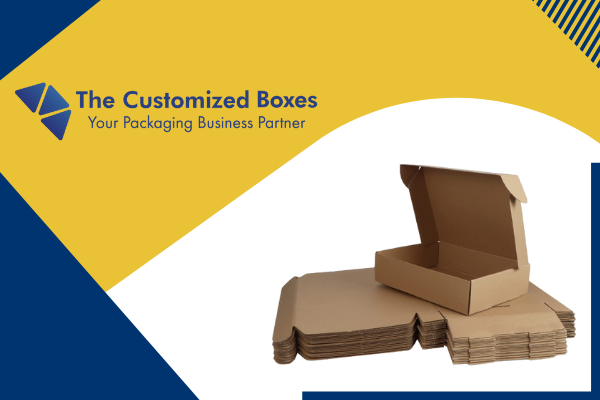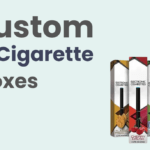Optimizing packaging in the Shipping Boxes as an Important Part of the supply chain goes beyond simply presenting a product to the consumer in attractive Shipping Boxes. Wrapping design affects the whole supply chain and plays an important role in managing distribution, damage, and return costs.
Streamlined packaging solutions ensure the safety of your product and in the case of fresh food and medicine. While reducing packaging costs and increasing the efficiency of the end-to-end supply chain.
Packaging Functions
The functions of packaging are different, but they are all designed to meet specific challenges in supply chain management. The packaging design takes into account, among other things, marketing, ease of distribution, customer aesthetics, storage, and durability.
Protection Function
The protective function is a major concern of packaging, The packaging must protect the product from its environment and in the case of potentially dangerous products, it must protect the environment of the contents of the container.
Also Read: Follow the Best Practices when Shopping with Online Printing Companies
Primary protective packaging solutions ensure that the product survives handling during the Shipping Boxes as an Important Part process without loss of value while being protected against damage and theft. Examples of this type of packaging are tamper-resistant properties for the pharmaceutical industry and food cartons.
Storage Function
Packaging materials and containers must be capable of being stored efficiently before and after packaging. Since packaging can take place in multiple locations, materials must be designed to meet a sometimes different range of storage requirements. For high storage must try Tincture Boxes.
Transport Function
Appropriate packaging design allows the packaging to be moved, lifted, stored, and stacked on pallets and in loading units to make maximum use of available transport space. By filling freight units with little or no space, packaging enables the most cost-effective use of transportation options.
The design of the packaging should also take into account the legal requirements of the Occupational Safety and Health Administration (OSHA) for safe handling. Packaged products must be easy to move manually or designed for use by forklifts or hand carts, including labels indicating load-bearing lifting points.
Promotional Function
The design of promotional packaging closely linked to the sales function. Shipping Boxes, crates, and containers are designed to grab the attention of consumers and stimulate purchases. Promotional wrapping can enlarge the risk of theft in the supply chain, so promotional containers are sometimes closed in larger, smaller attractive containers.
The Service Function
The packaging gives the consumer important details about the product. These details may include a list of ingredients, instructions for use, recommended doses, and any warnings required by legal requirements. As part of a parcel service function, the container can perform additional functions when the contents are pulled out, such as acting as a storage container or performing some other function related to the contents of the package.
The Guarantee Function
Undamaged packaging is the manufacturer’s warranty for the quality and consistency of the packed contents. For example, fraud-resistant packaging is an important guarantee of safety for medicines and many foods. For medicine and food, packaging try The Customized Boxes Medicine Boxes and Food Trays.
Depending on the nature of the product, legal requirements may require that the packaging contain details. Such as identification of contents, composition, weight, quantity, and shelf life. Deviations from these labels indicate that the product packaging has been affected in some way.
Tertiary Functions
Tertiary packaging is an additional packaging that protects not only the product but also the primary and sometimes secondary packaging. It also has organizational features where multiple individually packaged products destined for a single destination are grouped into a single unit. In general, more and more consumers expect environmentally friendly packaging especially tertiary packaging which uses more.
Package Optimization
Packaging Optimization takes a holistic view of packaging solutions by designing containers. That uses the least amount of packaging material for the least amount of money while maintaining the required quality. Optimizing a package may include reviewing the parameters of the package to reduce the weight and size ratios to allow multiple units per package. Palletize or replace packaging materials with easier recyclable materials.
Packing Affects the Supply Chain
Packaging design and optimization cover all aspects of the supply chain. Optimized packaging minimizes the limitations of packaging construction, packaging, storage, and transportation. By reducing the environmental footprint of packaging with recycled and energy-saving materials, energy consumption and material costs are reduced, thereby reducing overall costs. Cardboard Boxes are the best environment-friendly boxes.
During transit, optimized packages allow more efficient use of freight units and easier distribution to stores and consumers. At the end of the supply chain, an optimized package delivers information and value to the customer, improves brand recognition, and encourages future purchases.
The Impact of Packaging on the Supply Chain
Packaging solutions affect supply chain management in several ways, including shipping costs, shipping visibility, and line consumption. Sustainable packaging, standardized Custom Shipping Boxes, and smart packaging can all improve the power and efficiency of the supply chain.
Packaging and Labeling Affect the Visibility of the Shipment
Smart packaging labels increasingly used to improve the visibility of the shipment. Older methods of checking the contents of a container, such as manual scans, paper lists, and visual confirmation of contents, are all prone to human error. Smart packaging labels use RFID Radio Frequency Identification codes to automatically notify all stakeholders of shipping, transportation, and delivery updates.
Wrapping Innovations have Made the Supply Chain More Systematic
Some of the biggest innovations in packaging are designed to increase durability and reduce material costs. Zero-waste packaging, for example, uses biodegradable materials made from bamboo, cassava, and other renewable resources to replace polystyrene and plastic containers.
To guarantee customers the freshest ingredients and medicines, the packaging can now contain smart pigments. These change colour to reflect the freshness of the packaged product. This not only benefits customers but also alerts suppliers to problems and delays in the supply chain due to destruction.
How Wrapping Optimization Can Reduce Shipping Costs
At the end of the day, shipping costs are all about space. The more you can fit in boxes, the more efficient your shipping costs will be. Whether you’re shipping from your distribution centre by truck, train, sea, or air, the right packaging materials help keep shipping costs down.







